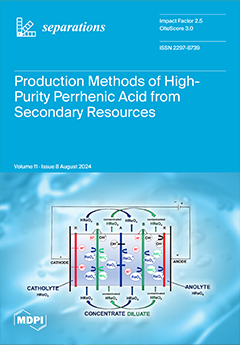Alzheimer’s disease (AD) is a progressive neurodegenerative condition characterized by memory and cognitive decline in older individuals. Beta-amyloid (A
β), a significant component of senile plaques, is recognized as a primary contributor to AD pathology. Hence, substances that can inhibit A
β production and/or accumulation are crucial for AD prevention and treatment.
Agrimonia pilosa LEDEB. (
A. pilosa) (Rosaceae), specifically its aerial parts, was identified in our previous screening study as a promising candidate with inhibitory effects on A
β production. Therefore, in this study,
A. pilosa extract was investigated for its anti-amyloidogenic effects, and its bioactive principles were isolated and identified. The ethanol extract of
A. pilosa reduced the levels of sAPP
β and
β-secretase by approximately 3% and 40%, respectively, compared to the DMSO-treated control group in APP-CHO cells (a cell line expressing amyloid precursor protein), which were similar to those in the positive control group. In addition, the ethanol extract of
A. pilosa also hindered A
β’s aggregation into fibrils and facilitated the disaggregation of A
β aggregates, as confirmed by a Thioflavin T (Th T) assay. Subsequently, the active constituents were isolated using a bioassay-guided isolation method involving diverse column chromatography. Eleven compounds were identified—epi-catechin (
1), catechin (
2), (2
S, 3
S)-dihydrokaempferol 3-
O-
β-
D-glucopyranoside (
3), (-)-epiafzelechin 5-
O-
β-
D-glucopyranoside (
4), kaempferol 3-
O-
β-
D-glucopyranoside (
5), apigenin 7-
O-
β-
D-glucopyranoside (
6), dihydrokaempferol 7-
O-
β-
D-glucopyranoside (
7), quercetin 3-
O-
β-
D-glucopyranoside (
8), (2
S, 3
S)-taxifolin 3-
O-
β-
D-glucopyranoside (
9), luteolin 7-
O-
β-
D-glucopyranoside (
10), and apigenin 7-
O-
β-
D-methylglucuronate (
11)—identified through 1D and 2D NMR analysis and comparison with data from the literature. These compounds significantly decreased A
β production by reducing
β- and
γ-secretase levels. Moreover, none of the compounds affected the expression levels of sAPP
α or
α-secretase. Further, compounds
1,
2,
4,
8, and
10 demonstrated a dose-dependent reduction in A
β aggregation and promoted the disaggregation of pre-formed A
β aggregates. Notably, compound
8 inhibited the aggregation of A
β into fibrils by about 43% and facilitated the disassembly of A
β aggregates by 41% compared to the control group containing only A
β. These findings underscore the potential of
A. pilosa extract and its constituents to mitigate a crucial pathological aspect of AD. Therefore,
A. pilosa extract and its active constituents hold promise for development as therapeutics and preventatives of AD.
Full article





